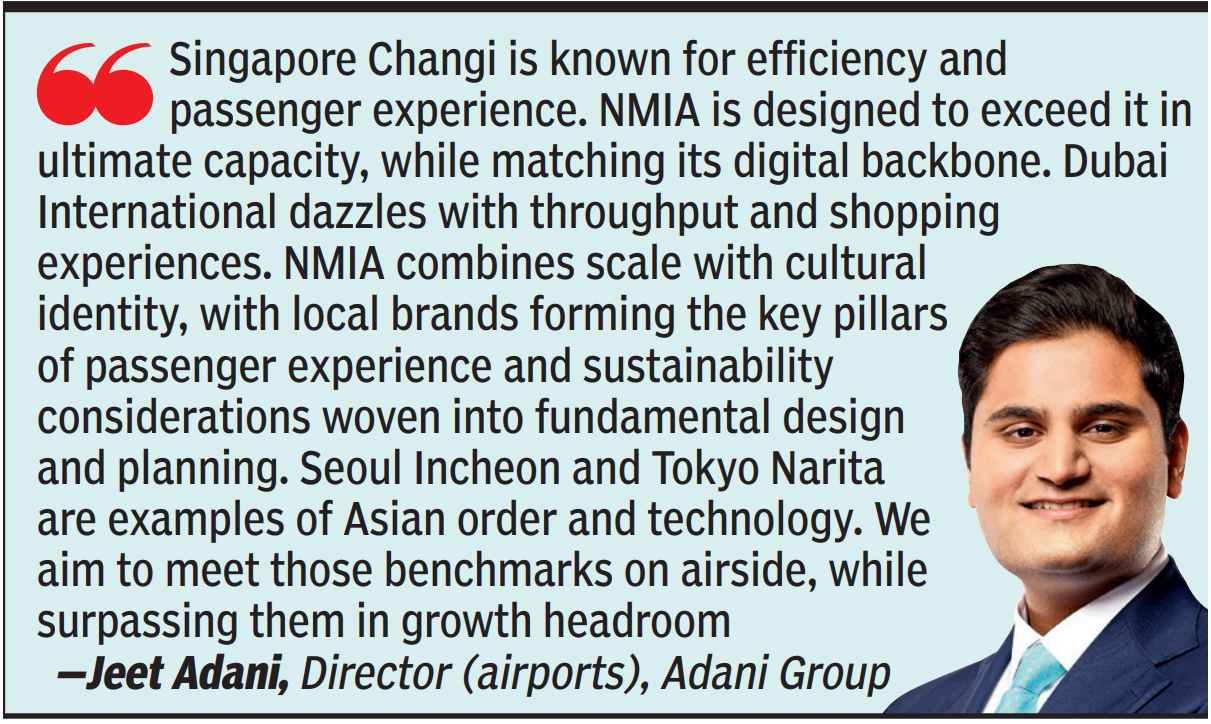Navi Mumbai International Airport’s (NMIA) opening will signal the start of restoring equilibrium for the Mumbai Metropolitan Region (MMR) in Indian aviation – a place that Mumbai had slowly ceded to Delhi, Bengaluru and Hyderabad over the last decade, said Jeet Adani, director (airports) of the Adani Group, who oversaw construction of MMR’s long-awaited hub. He spoke to TOI, a day before NMIA’s inauguration by Prime Minister Narendra Modi. He said, having risen from “swamps and mudflats, the aviation hub will surpass the best airports of Asia, Europe and America in user experience and efficiency for stakeholders.” NMIA is opening with a capacity to handle two crore passengers annually (CPA). It is expected to reach its saturation capacity of nine CPA in about a decade, with two runways and three terminals connected by an automated people mover – built with investment of over Rs 1 lakh crore.“For Mumbai, NMIA’s inauguration is more than just the opening of a terminal and a runway. It is lifting of a long-standing jinx. Mumbai’s Chhatrapati Shivaji Maharaj International Airport (CSMIA) has been operating at a peak capacity of about 5.5 crore passengers annually, but the demand of this region – the country’s aviation nerve centre – was much more and continues to rise. At Mumbai airport, congestion and lack of space had become the norm. By the late 1990s it had become clear that a second airport would be required, and the Navi Mumbai site was selected back then,” Jeet Adani, the younger son of group patriarch Gautam Adani, said.

But it took close to three decades for the plan to become a reality, owing to a series of unending roadblocks. Instead of being seen as the site of an upcoming airport, for many years the land – 2,800 hectares of it – remained embroiled in court cases. The delay meant Mumbaikars suffered from lack of aerial connectivity and the city lost its busiest aviation hub slot in 2008.“The challenges were there in 2021, when we took over the responsibility of constructing NMIA. But instead of seeing them as challenges, Gautam Adani saw them as an opportunity. On his first visit to the site, he decided NMIA would open not with a capacity of 1 CPA but double of that, simply because of the demand of region. Speed was paramount. Financial closure, elusive for over a decade, was achieved within months. Rehabilitation was handled with sensitivity & speed. Creeks were diverted, power lines shifted and hills flattened. The impossible suddenly seemed inevitable,” said Jeet Adani.


